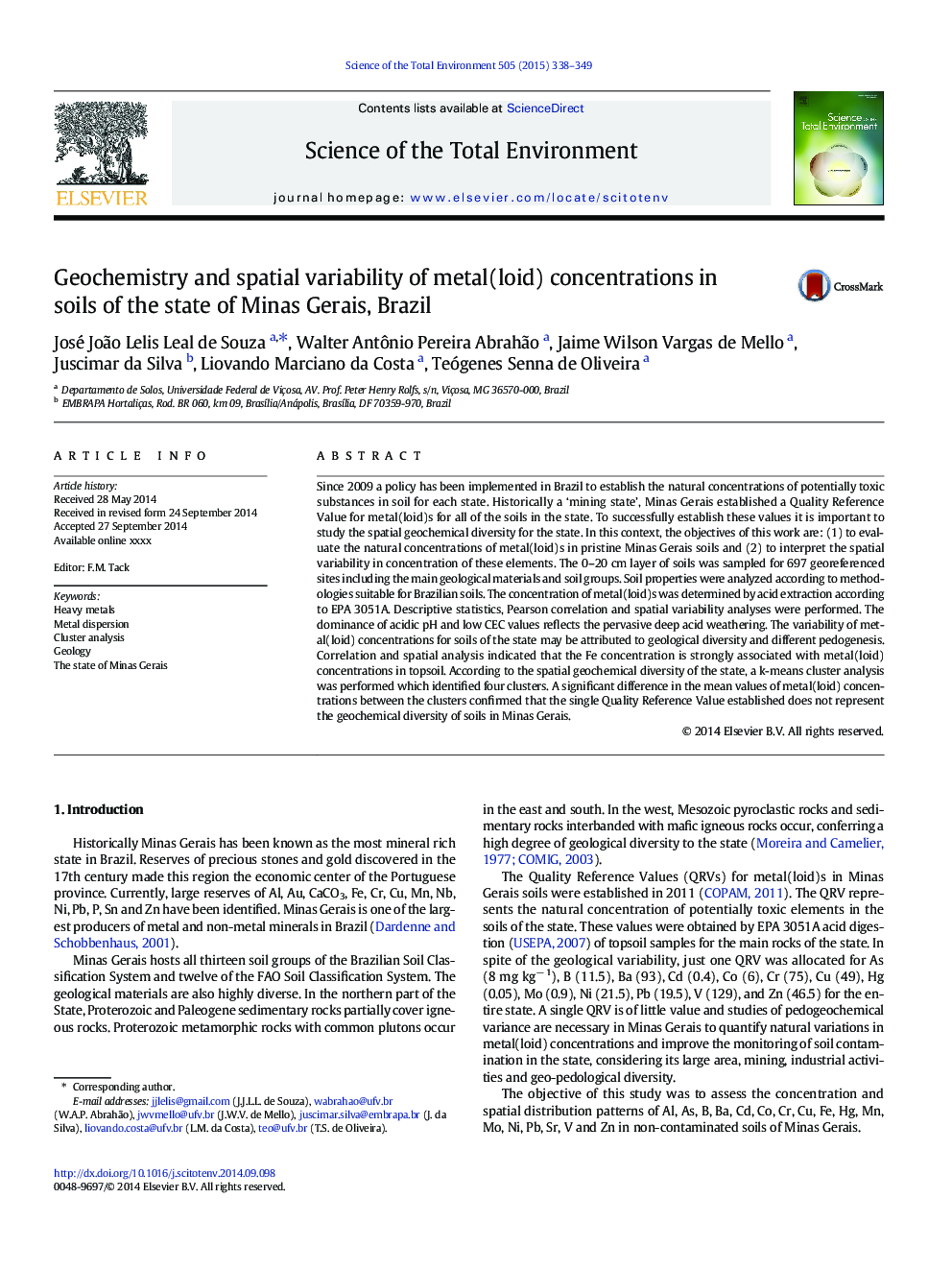| Article ID | Journal | Published Year | Pages | File Type |
|---|---|---|---|---|
| 6328024 | Science of The Total Environment | 2015 | 12 Pages |
Abstract
Since 2009 a policy has been implemented in Brazil to establish the natural concentrations of potentially toxic substances in soil for each state. Historically a 'mining state', Minas Gerais established a Quality Reference Value for metal(loid)s for all of the soils in the state. To successfully establish these values it is important to study the spatial geochemical diversity for the state. In this context, the objectives of this work are: (1) to evaluate the natural concentrations of metal(loid)s in pristine Minas Gerais soils and (2) to interpret the spatial variability in concentration of these elements. The 0-20Â cm layer of soils was sampled for 697 georeferenced sites including the main geological materials and soil groups. Soil properties were analyzed according to methodologies suitable for Brazilian soils. The concentration of metal(loid)s was determined by acid extraction according to EPA 3051A. Descriptive statistics, Pearson correlation and spatial variability analyses were performed. The dominance of acidic pH and low CEC values reflects the pervasive deep acid weathering. The variability of metal(loid) concentrations for soils of the state may be attributed to geological diversity and different pedogenesis. Correlation and spatial analysis indicated that the Fe concentration is strongly associated with metal(loid) concentrations in topsoil. According to the spatial geochemical diversity of the state, a k-means cluster analysis was performed which identified four clusters. A significant difference in the mean values of metal(loid) concentrations between the clusters confirmed that the single Quality Reference Value established does not represent the geochemical diversity of soils in Minas Gerais.
Related Topics
Life Sciences
Environmental Science
Environmental Chemistry
Authors
José João Lelis Leal de Souza, Walter Antônio Pereira Abrahão, Jaime Wilson Vargas de Mello, Juscimar da Silva, Liovando Marciano da Costa, Teógenes Senna de Oliveira,
